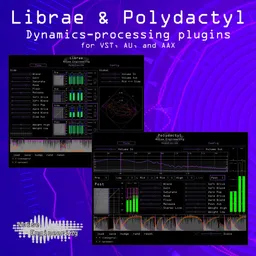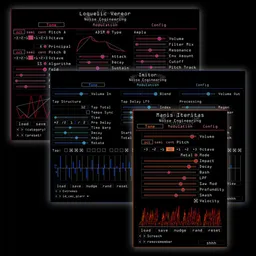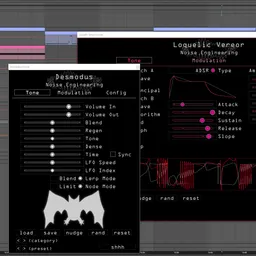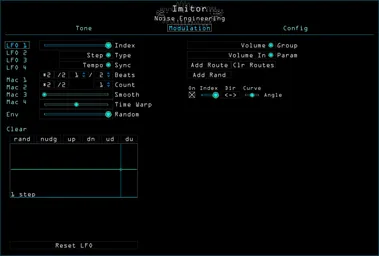One of my favorite parts of working with modular synthesizers is the unique ways that sequencers can be used. While developing our plugins, we took a lot of influence from the world of hardware, and techniques that are less common in the world of software can be applied to our plugins, like sequence randomization and live manipulation. Today, we’ll explore some techniques for generative and randomized sequencing using the Vereor plugins and some creative modulation and automation.
If you haven’t tried out any of our plugins, you can download the Freequel Bundle for free here, and check out Bundle 1 here. The techniques we cover here can be used in Cursus Vereor, or the free Virt Vereor and Sinc Vereor.
The concept
All our plugins have step sequencer LFOs that can be used to modulate virtually any parameter, including pitch. We can use this to create pitch sequences in more unusual ways than simply programming things on the DAW piano roll: we can randomize step values in a couple of different ways, bring sequences off the grid, and adjust sequence rate, timing, and range via automation. Just hold down a note and your sequence will play away, all by itself!
Quantized pitch modulation
To create a sequence, we first need to route an LFO to the Pitch parameter of any Vereor plugin. We can do this by navigating to the Modulation tab, selecting the “Voice” group and the “Pitch” param from the dropdowns, and then clicking “Add Route.”
Once the modulation is assigned, check the “Qt” box to activate a pitch quantizer: this makes sure that the synth stays in tune no matter what the modulation is.
Finally, we need to change the LFO type to “Step,” and we’re ready to create some sequences.

Timing
There are a few ways we can clock our sequences. The default mode is ‘Free’: the sequencer runs separately from the DAW’s timeline and tempo, and can be adjusted with the Speed slider. This is a great way to create sequences that are completely off-the-grid, which can be nice for creating polyrhythms. Related to that is ‘Transport’, which is unsynced from the DAW’s tempo but still follows the timeline.
If you’d rather stick to the grid, selecting ‘Tempo’ syncs everything to the DAW clock!
Creating sequences
Sequences can be drawn in manually by clicking and dragging in the sequencing window, or by clicking some of the shape preset buttons. We can also create a static random sequence by clicking the “rand” button: this is a nice way to get a repeating random pattern, perfect for finding inspiration when you need it. We can also use the Random slider along with any sequence: as we turn up this parameter, steps will progressively deviate from their preset values, which can be a great way to bring sequences to life.

This is also a great automation target – speaking of which…
Automating all the things
Automating sequencer parameters is a fantastic way to create variations and make patterns more unique. Of course, these parameters can be tweaked manually, too, or mapped to a MIDI controller for on-the-fly jams.
I enjoy modulating the main Index parameter on the LFO: this changes the range of notes our sequencer can play, meaning that you can change the entire pattern with a quick adjustment – and then return to your original pattern by moving it back to the initial position.
Random can also be automated to make your pattern deviate more from its initial settings, making it easy to create fills and variations.
There are more unusual automation targets as well: if you’re in Free or Transport sync mode, you can automate the Speed parameter and change your sequencer rate, and you can also automate the Count parameter to change how long your sequence is.
A combination of some (or all) of these techniques can make for some really unique patterns: here, we’re playing a single note in Cursus Vereor and automating a simple sequence to create a long pattern that never quite repeats the same way.






